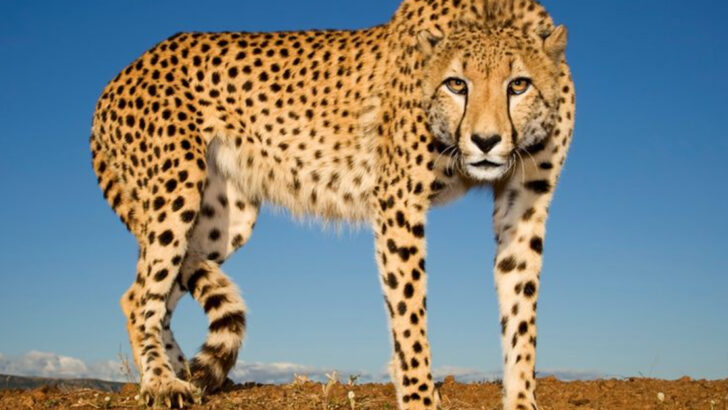Nature doesn’t just create predators—it paints them.
Big cats don’t need bright colors to impress. Their power is in the pattern.
Stripes, rosettes, spots, and swirls—these aren’t just for show.
They’re stealth in motion. Art with a pulse.
Each coat tells a story.
The jaguar’s rosettes whisper through jungle shadows.
The tiger’s stripes slice through tall grass like ghosts.
Even the snow leopard’s smoky spots vanish into the mountain mist.
These patterns aren’t accidents. They’re survival—crafted by time, terrain, and the need to strike unseen.
From dense rainforests to frozen peaks, these 15 big cats wear their wild like a masterpiece.
And once you’ve seen them, you’ll never forget them.
Let’s meet the most stunning fur coats in the animal kingdom—and the beasts who wear them like armor.
Bengal Tiger

The Bengal tiger’s bold orange coat, accentuated by striking black stripes, is not only breathtaking but serves a vital role in its survival. These stripes, uniquely patterned like fingerprints, provide camouflage within the forest, breaking up the tiger’s outline.
Interestingly, the pattern’s purpose extends beyond concealment. It helps tigers blend into the tall grass, making them stealthy hunters. The visually stunning combination of orange and black has fascinated many cultures, symbolizing power and strength.
In the wild, the Bengal tiger’s fur pattern is as much about survival as it is about beauty. This artistry is nature’s gift to one of the most iconic big cats.
Leopard

Leopards are masters of disguise, thanks to their iconic rosette-patterned fur. These patterns, resembling roses, are not just for show. They serve a crucial function in the leopard’s arboreal and terrestrial habitats.
The rosettes help them blend seamlessly into the dappled sunlight of the forest canopy, providing the perfect cover for stalking prey. In the mysterious world of the night, leopards become virtually invisible.
Their adaptable fur allows them to thrive in diverse environments, from dense forests to open savannas. This adaptability is part of the leopard’s secret to survival and enduring allure.
Snow Leopard
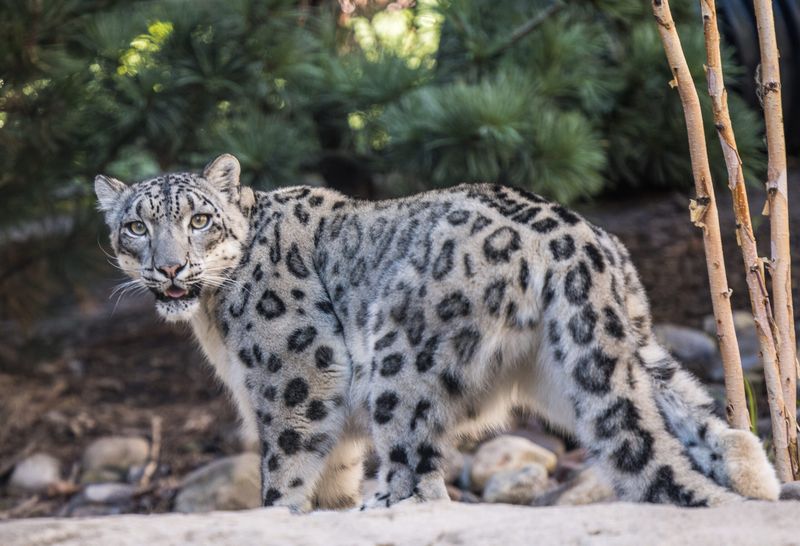
High in the rugged mountains, the snow leopard’s exquisite grey rosettes offer more than meets the eye. These patterns provide exceptional camouflage against the rocky, snow-covered landscapes of Central Asia.
Their thick fur and the unique coloration make it possible for them to ambush prey with stealth and precision. The beautiful pale grey background helps them blend into the snowy surroundings.
Snow leopards are often referred to as “ghosts of the mountains,” a testament to their elusive nature and striking appearance. Their mysterious fur patterns continue to captivate researchers and wildlife enthusiasts alike.
Jaguar
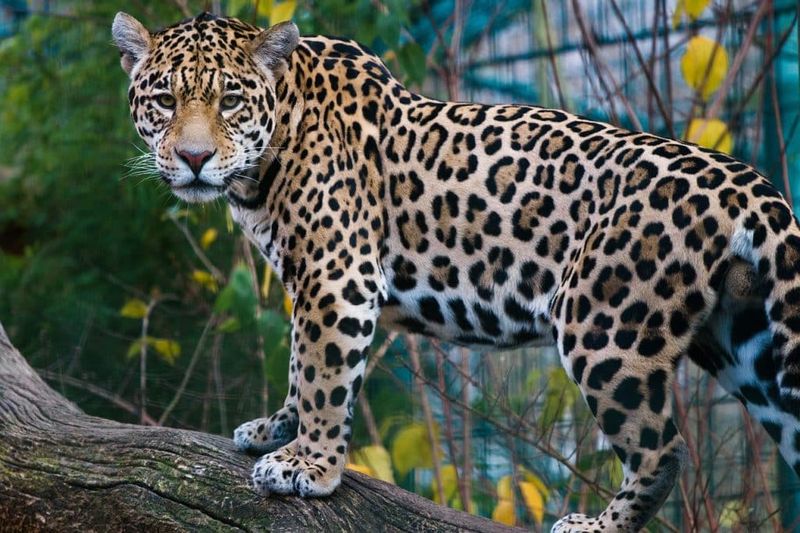
With a reputation for strength, the jaguar’s fur is incredibly distinctive, marked by black rosettes and spots on a golden backdrop. These striking patterns play a vital role in rainforest habitats, offering perfect camouflage amidst the shadows and dappled light.
Jaguars are known for their powerful build and tenacity, and their fur reflects this robust character. The rosettes offer an intricate design that symbolizes the jaguar’s mysterious allure.
This remarkable pattern enables the jaguar to move stealthily through the underbrush. As one of the most iconic big cats, its fur continues to inspire awe and admiration.
Cheetah
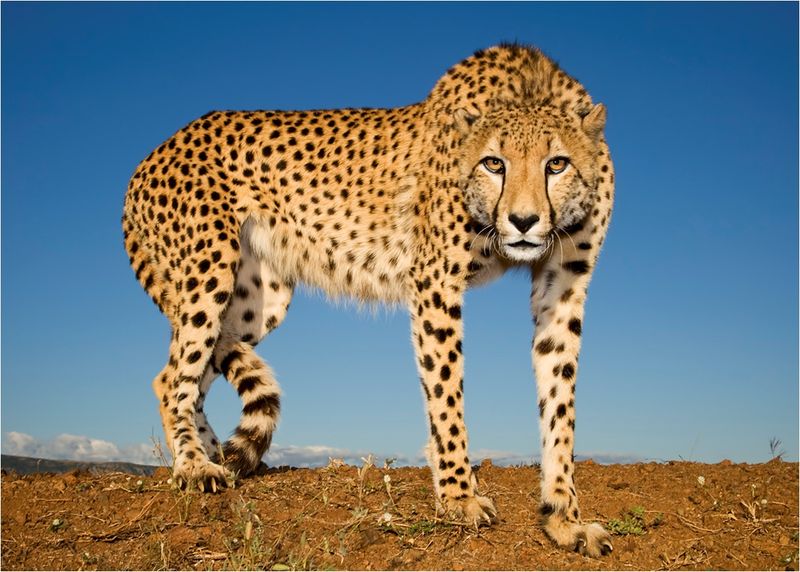
Renowned for speed, the cheetah’s sleek coat is dotted with solid black spots, setting it apart from other big cats. These spots form a stunning contrast against a tawny background, providing both beauty and functionality.
In the vast savannas, this pattern acts as an efficient camouflage, aiding in their legendary hunting prowess. The cheetah’s streamlined build complements their spotted coat, emphasizing agility and grace.
Unlike leopards, cheetahs have tear-like streaks under their eyes, which reduce glare from the sun. This combination of spots and stripes enhances the cheetah’s reputation as one of nature’s most elegant hunters.
Clouded Leopard
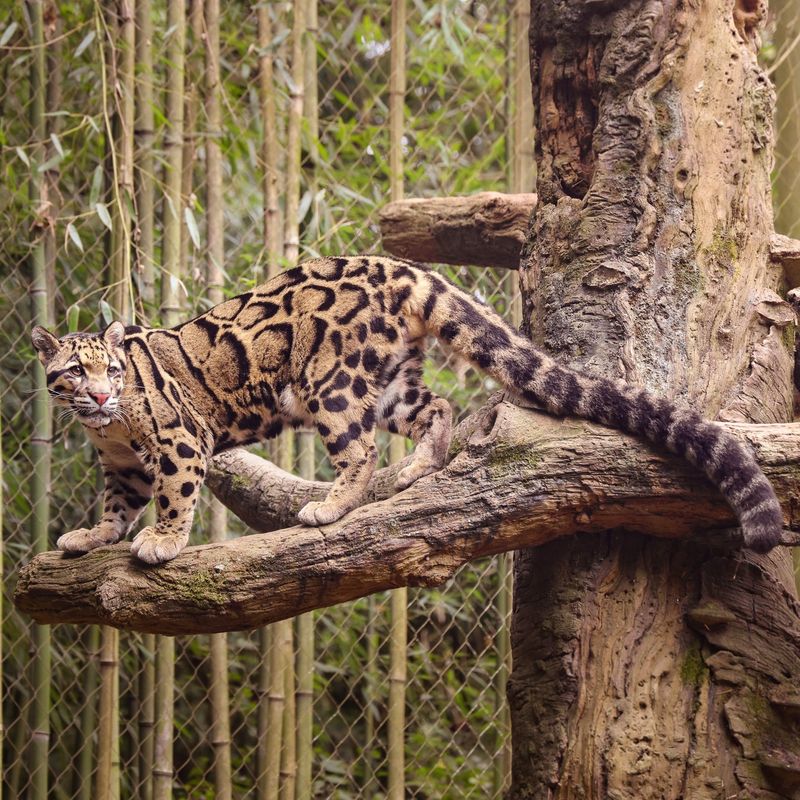
Unlike any other, the clouded leopard’s fur features large, cloud-like blotches, which give it an ethereal appearance. These patterns are not just visually appealing; they provide crucial camouflage in the dense forests of Southeast Asia.
This cat’s ability to scale trees with ease is legendary, and its fur enhances its arboreal lifestyle. The clouded patterns help it blend into the forest canopy, making it an effective predator.
The mystical fur pattern reflects the clouded leopard’s secretive nature. It captures the imagination and continues to be a subject of fascination for wildlife enthusiasts and researchers worldwide.
Lynx
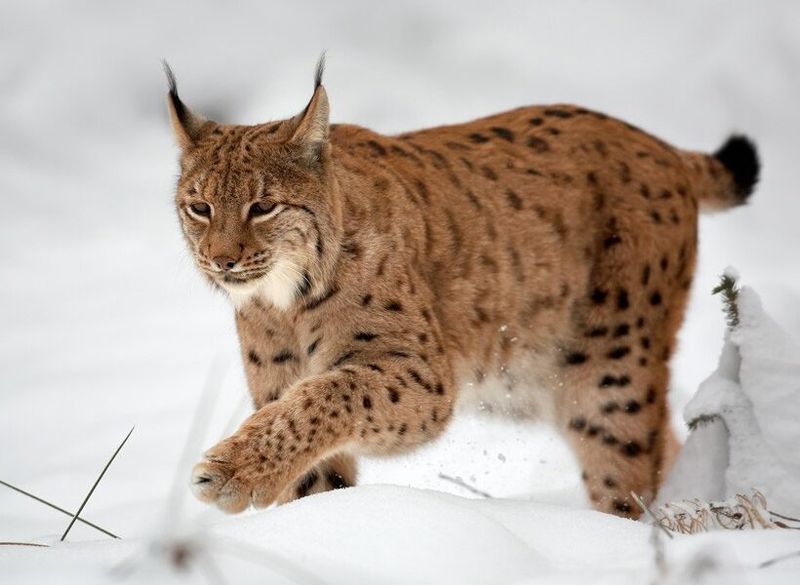
With regal tufted ears and a spotted coat, the lynx is a figure of wild beauty. Its fur, a blend of subtle spots and a pale background, offers effective camouflage in snowy landscapes.
Lynxes are adapted to cold environments, and their thick fur provides warmth as well as beauty. The subtle spots assist in blending into the forest undergrowth.
Their tufted ears enhance hearing, making them skilled hunters. The lynx’s fur pattern and features add to its enigmatic presence, earning it a special place in the lore of the wilderness.
Serval
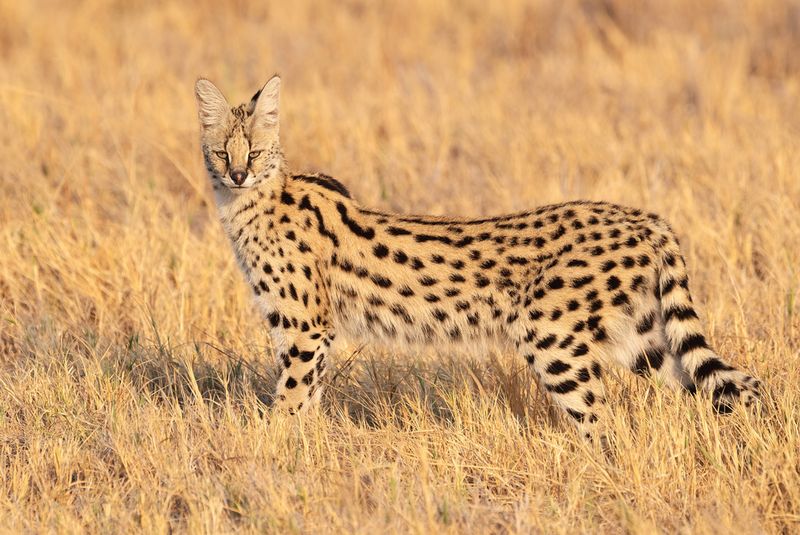
The serval’s long legs and golden-yellow fur, adorned with bold black spots, make it a standout in the wild. Its unique pattern aids its survival in the grasslands and wetlands of Africa.
These spots help the serval blend into tall grasses, providing essential camouflage while stalking prey. Their elongated bodies and large ears contribute to their hunting prowess.
With a leap that can reach up to three meters, the serval’s agility is as remarkable as its coat. The combination of spots and physical talents makes the serval one of nature’s fascinating felines.
Caracal

The caracal’s striking tufted ears and sleek tan coat make it an enigmatic figure in the wild. The smooth, solid color provides a perfect blend with the rocky and desert terrains.
Its agility and powerful hind legs are complemented by the beautiful simplicity of its coat. The caracal’s ears, adorned with tufts, add to its exotic appeal.
Though it lacks the spots or stripes of its kin, the caracal’s elegance lies in its understated beauty. Its appearance is a perfect match for its reputation as a skilled and secretive hunter.
Ocelot
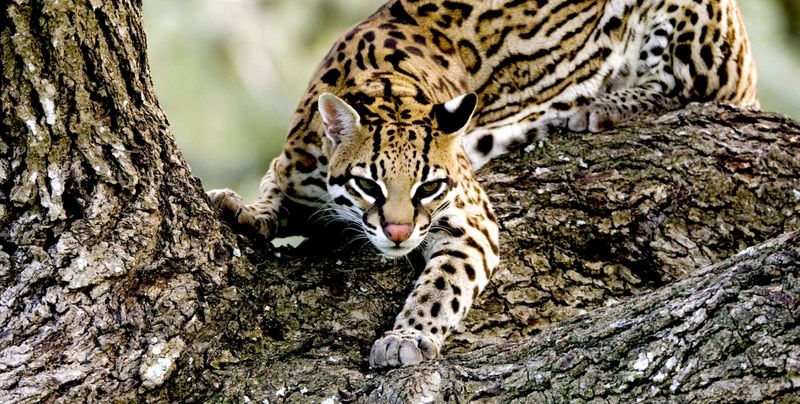
The ocelot, with its intricately patterned fur, is a masterpiece of nature’s design. Its coat features chain-like rosettes and spots, providing exceptional camouflage in dense rainforest environments.
These patterns help it move stealthily through the underbrush, hunting with precision. The ocelot’s fur is not only beautiful but also highly functional.
Its stunning appearance has inspired many artists and continues to captivate wildlife enthusiasts. The ocelot’s unique coat serves as a testament to the intricate beauty of evolution in the animal kingdom.
Lion
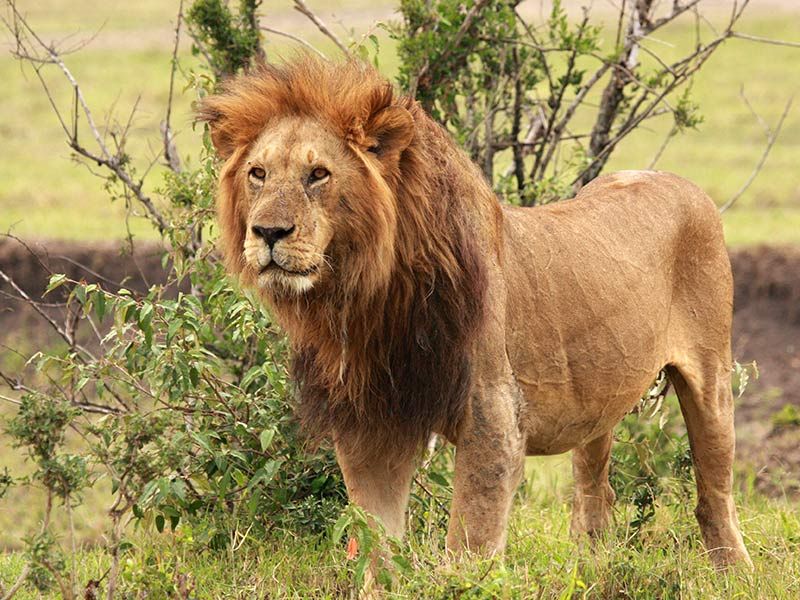
The lion’s majestic mane, though not patterned like other big cats, is iconic in its own right. The mane’s color and thickness vary, offering insight into the lion’s age and strength.
The golden-brown fur of the lion blends seamlessly with the savanna, providing an advantage in stalking prey. Despite the lack of spots or stripes, the lion’s regal appearance commands attention.
As the king of the jungle, the lion’s beauty lies in its powerful presence and charismatic allure. Its simplicity and strength are celebrated across cultures and legends worldwide.
Chinese Mountain Cat
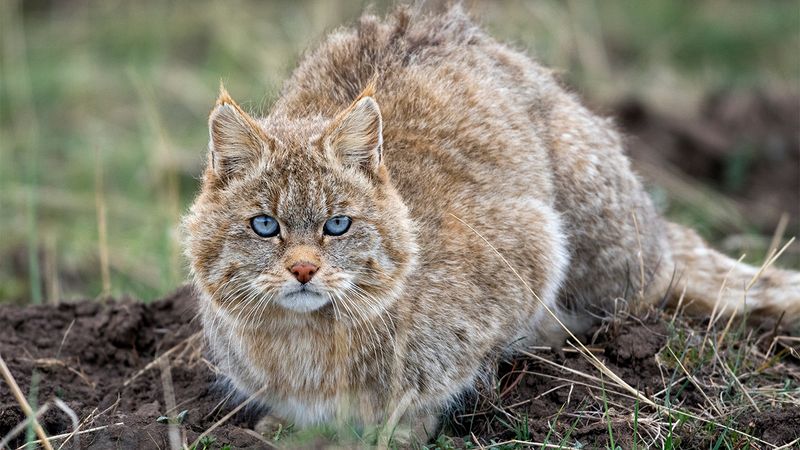
In the rugged terrains of China, the Chinese Mountain Cat roams with a grace that belies its elusive nature. Its fur, a sandy-yellow canvas with dark horizontal stripes, provides an excellent disguise among the rocky landscape.
These stripes, coupled with a thick, bushy tail, serve not just for camouflage but also for communication among its peers. The cat’s ability to blend in with its surroundings makes it a challenging subject for wildlife photographers.
The Chinese Mountain Cat is a rare sight, often seen only by those patient enough to venture into its high-altitude habitat, reminding us of the beauty of nature’s hidden gems.
Puma

The puma, also known as a cougar or mountain lion, boasts a sleek, tawny coat that allows it to blend seamlessly with rocky landscapes. Its fur lacks the distinctive spots or stripes of other big cats, yet it exudes an elegance of its own.
The coloration provides camouflage in diverse habitats, from forests to deserts. The puma’s adaptability is reflected in its widespread distribution.
Known for its agility and strength, the puma’s understated beauty and stealthy nature make it a formidable predator. Its fur pattern, or lack thereof, speaks to a different kind of wild beauty.
Fishing Cat
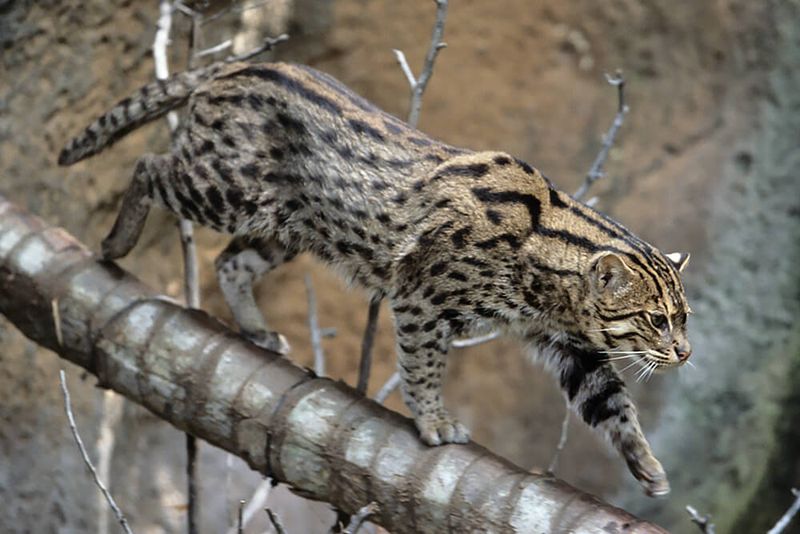
The fishing cat’s unique existence near water is mirrored in its spotted coat. These patterns are tailored for wetland habitats in South and Southeast Asia, providing effective camouflage among reeds and water.
Unlike most cats, the fishing cat loves water, and its fur reflects this aquatic lifestyle. The spots serve as both decoration and disguise.
The fishing cat’s ability to swim and catch fish adds to its intrigue. Its distinctive fur pattern and aquatic talents create a fascinating portrait of adaptation and survival in the wild.
Marbled Cat

In the dense forests of Southeast Asia, the elusive marbled cat prowls with a stealthy elegance. Its fur, a swirling masterpiece of marbled patterns, sets it apart from other wild cats. This feline’s coat resembles an abstract painting with bold strokes and soft hues.
One might spot it gracefully perched on a tree, its marbled fur blending with the forest shadows. This arboreal acrobat navigates the canopy with ease, its long tail aiding in balance.
Did you know? The marbled cat’s coat is not just for show; it provides camouflage against predators and prey alike, highlighting nature’s genius.

